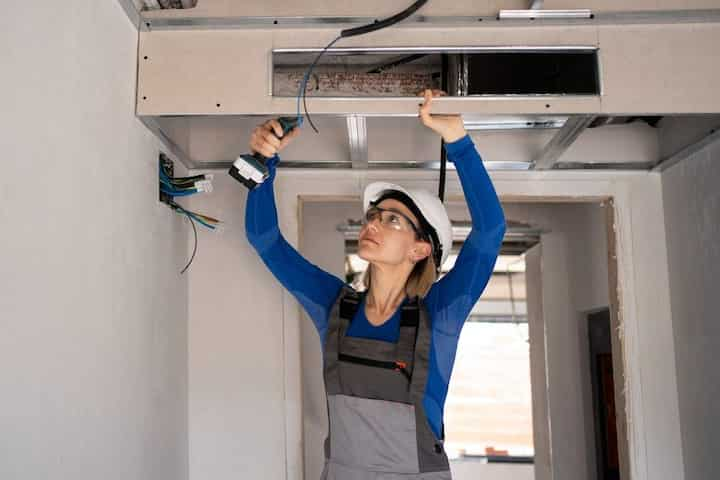
Transform Your Indoor Environment with Air Quality Services in Bloomington, IN
Understanding Indoor Air Pollution in Bloomington
Located in the heart of Indiana, Bloomington is known for its vibrant culture and natural beauty. However, indoor air pollution remains a hidden challenge, often overlooked amidst its bustling activities. Air quality in indoor environments can be significantly influenced by various pollutants originating from both outdoor sources and indoor activities.
According to studies conducted by the U.S. Environmental Protection Agency (EPA), indoor air can be two to five times more polluted than outdoor air. This discrepancy is alarming given that the average American spends approximately 90% of their time indoors. In Bloomington, common indoor pollutants include volatile organic compounds (VOCs) from paints and building materials, mold spores, and pet dander.
The Impact of Poor Indoor Air Quality on Health
Indoor air quality directly affects human health, influencing respiratory conditions, cardiovascular health, and overall well-being. Long-term exposure to indoor air pollutants has been linked to chronic illnesses such as asthma and lung diseases. In Bloomington, where the population includes a significant number of students and elderly residents, vulnerability to poor IAQ is heightened.
A report by the World Health Organization (WHO) estimates that around 3.8 million people globally die prematurely each year from illnesses attributable to household air pollution. This statistic underscores the significance of air quality services in improving health outcomes and reducing healthcare costs in communities like Bloomington.
Air Quality Services: A Comprehensive Solution
The first step towards improving indoor air quality is understanding the specific needs of a space. Air quality services in Bloomington offer holistic solutions, ranging from air quality assessments to the implementation of innovative purification technologies. These services aim to identify sources of pollution, measure air quality levels, and offer tailored recommendations to mitigate exposure.
Regular monitoring and maintenance of heating, ventilation, and air conditioning (HVAC) systems also play a crucial role in maintaining healthy indoor environments. Advanced filtration systems, UV lights, and dehumidifiers can significantly reduce indoor pollutants, ensuring that spaces remain safe and comfortable for occupants.
Technological Advancements in Air Quality Monitoring
Bloomington is at the forefront of adopting innovative technologies designed to enhance indoor air quality. Smart IAQ devices equipped with sensors are capable of providing real-time data and alerting homeowners to potential air quality issues. This technology can significantly enhance the decision-making process, enabling more proactive and efficient management of indoor environments.
Data from these devices can be analyzed to detect patterns and anticipate future air quality challenges. This predictive capability is invaluable for creating safe, healthy indoor environments, especially in public and commercial spaces where air quality fluctuations can impact a large number of people.
Economic and Social Benefits
Investing in indoor air quality services can have significant economic and social benefits. Reduced health issues lead to fewer absenteeism days and increased productivity. Businesses and schools in Bloomington that prioritize IAQ improvements are likely to experience enhanced performance and satisfaction among employees and students.
A Washington State University study highlighted that improving indoor air quality can lead to productivity increases of up to 10%. For Bloomington, a city with thriving educational and business sectors, this can translate into tangible economic gains, making air quality services a worthwhile investment.
Challenges Facing Air Quality Services in Bloomington
Despite the myriad benefits, several challenges persist within the air quality sector in Bloomington. One of the primary challenges is the public's awareness and understanding of indoor air quality issues. Many residents and business owners are unaware of the pollutants present in their environments and the associated health risks.
Furthermore, the upfront cost of implementing comprehensive air quality solutions can be a deterrent, particularly for small businesses and homeowners. Educating the populace on the long-term savings and health benefits can help mitigate this hurdle.
Government Involvement and Regulation
Encouragingly, both local and federal governments are recognizing the importance of indoor air quality and implementing regulations to drive improvements. In Bloomington, initiatives such as the Indiana Department of Environmental Management (IDEM) play a critical role in setting standards and providing guidance for enhancing IAQ.
Partnerships between government bodies, educational institutions, and the private sector can further drive progress by fostering innovation and creating an environment conducive to research and development in air quality solutions.
Case Studies: Success Stories from Bloomington
Bloomington has seen several successful implementations of air quality services that serve as models for other regions. One noteworthy case is the adoption of advanced HVAC systems in residential complexes, resulting in a marked decrease in reported health issues among occupants.
Another example is the transformation of the Indiana University campus, where air quality monitoring systems have been integrated into infrastructure to ensure the well-being of students and faculty. These case studies exemplify the positive impact that comprehensive air quality services can have on communities.
The Future of Indoor Air Quality in Bloomington
The future of indoor air quality in Bloomington is promising, with ongoing advancements and growing awareness set to drive further improvement. The integration of artificial intelligence (AI) and machine learning technologies in air quality monitoring is expected to revolutionize the sector by offering predictive analytics and automated responses to air quality issues.
As residents continue to prioritize health and wellness, the demand for sophisticated air quality solutions will undoubtedly increase. This trend aligns with the global movement towards healthier, more sustainable living environments, positioning Bloomington as a leader in the air quality improvement arena.
Key Takeaways: Transformative Impact on Indoor Environments
Indoor air quality services in Bloomington, IN, have the potential to transform indoor environments by significantly improving health outcomes, economic productivity, and overall quality of life. These benefits are vast and far-reaching, making the investment in air quality improvements not only beneficial but essential.
Continuous education, technology adoption, and government support will play vital roles in advancing the indoor air quality sector. With Bloomington setting the benchmark, other regions can learn and implement similar strategies to create safer and healthier indoor environments worldwide.